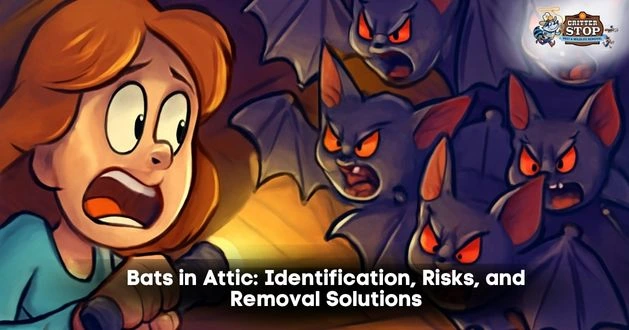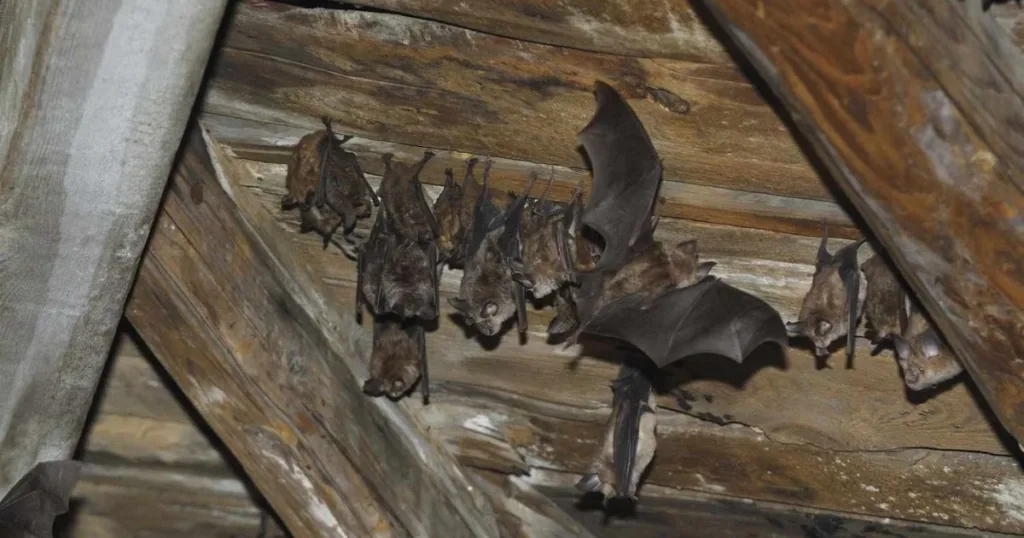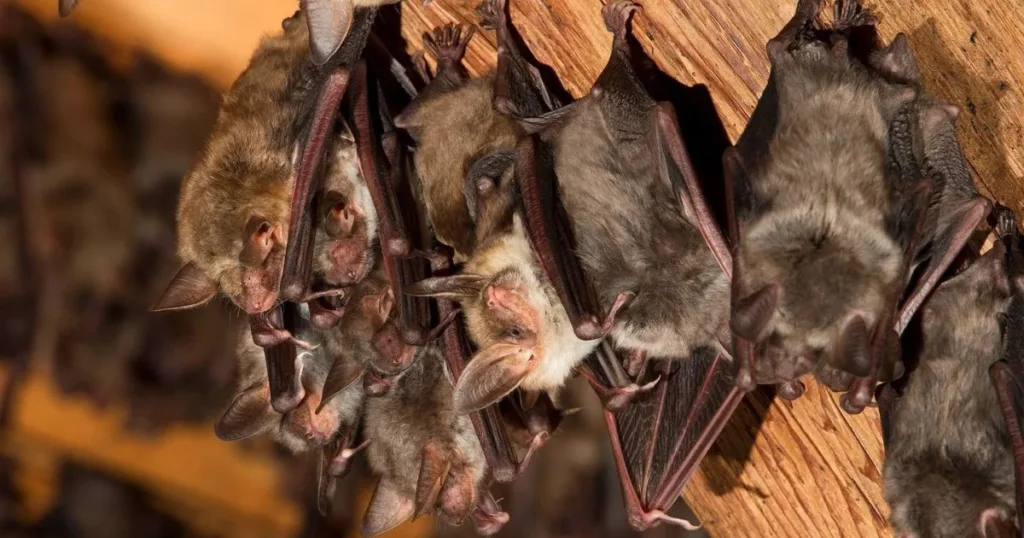
If you hear unusual rustling or scratching noises at night, chances are you have bats in attic. Bats commonly enter attics in search of shelter, especially as the weather changes or during their breeding season. Their presence can lead to noise disturbances and potential damage to insulation or wiring.
Understanding the sounds bats make in your attic can help you identify if they are the cause of unexplained noises. These sounds are often soft flapping or high-pitched squeaks, which you may notice more clearly when the house is quiet.
You’ll need to act carefully because bats are protected in many areas, and improper removal can cause problems. Learning the signs and how to handle bats in your attic can help you address the issue safely and effectively.

You can recognize the presence of bats in your attic through specific signs and noises that become evident over time. Understanding why bats choose your attic helps in preventing and addressing the issue effectively.
Look for dark stains or smudges near roof vents, eaves, or around entry points. These marks come from the bats’ oily fur as they crawl in and out. You might also notice small piles of bat guano, which look like tiny, dark pellets usually found near where the bats roost.
Another sign is a distinct ammonia-like smell caused by accumulated droppings. Additionally, flies or other insects may be attracted to the bat guano. You may spot bat droppings outside, especially beneath likely exit points.
Checking at dusk can reveal bats leaving the attic in groups. This flight activity can be a clear sign of bats in attic spaces.
You might hear high-pitched squeaking or chittering sounds inside your attic, especially at dawn or dusk when bats are most active. These noises come from their communication and movement within tight spaces.
Occasionally, you could detect a scratching or fluttering sound, caused by bats brushing against wood or other surfaces. These noises usually increase at night or during warmer months when bats are more active.
If you hear rustling or wing flapping in the attic ceiling or walls, it is a likely indicator of bats in attic spaces.
Bats prefer attics because they offer warmth, darkness, and protection from predators. The quiet environment is ideal for roosting, especially during the maternity season.
Small gaps or openings in roofs or vents allow easy access. The insulation and wood structures provide safe places to hang and raise young.
Attics mimic natural cave-like conditions, which appeals to many bat species. This makes your attic an attractive spot for bats seeking shelter.

Removing bats from your attic requires careful handling to protect your health and ensure compliance with relevant laws. Preventing future infestations involves sealing entry points and maintaining a well-managed home environment. Ethical issues surrounding the killing of bats are critical for both local ecosystems and legal guidelines.
When dealing with bats in attic spaces, it is essential to consider the risks of rabies and histoplasmosis, a lung infection caused by bat droppings. Always wear protective gear such as gloves, masks, and coveralls during removal. Avoid direct contact with bats to minimize your exposure to disease.
Legally, many bat species are protected under wildlife conservation laws. It is often illegal to kill bats or disturb maternity colonies, and doing so can result in fines. Check with local wildlife authorities before attempting any removal or extermination to ensure compliance with relevant regulations.
Preventing bats from re-entering your attic involves inspecting your home at dusk, when bats are most active. Seal all gaps larger than 1/4 inch using metal flashing, caulk, or weatherproof mesh. Focus on vents, eaves, roofline cracks, and chimneys.
Install one-way exclusion devices on exit points to allow bats to leave but not return. After confirming all bats are out, permanently seal openings. Regular attic inspections and removing attractants, such as standing water or insects, will reduce the chance of reinfestation.
Trying to kill bats in attic spaces is not recommended due to legal restrictions and ecological impact. Bats consume large numbers of insects, contributing to natural pest control. Killing them disrupts local biodiversity and may worsen insect problems.
Additionally, improperly killing bats can lead to increased exposure to pathogens. Many methods are ineffective and cause unnecessary suffering. Focus on humane exclusion methods rather than lethal means for a safe, responsible solution.
When dealing with bats in the attic, it is crucial to use humane techniques to avoid harm to both the bats and your home. One of the most effective methods is exclusion, which involves sealing all entry points after bats have safely exited.
You can install one-way exclusion devices, which allow bats to leave but prevent reentry. This technique helps reduce the disturbance caused by bats in attic sound, as bats leave quietly without panic.
Timely exclusion is essential. It should be done at dusk or dawn when bats are naturally outside. Avoid sealing during maternity season to protect baby bats still unable to fly.
Using chemical repellents and traps is not recommended because they can cause unnecessary harm and often fail to provide a permanent solution to the problem.
Here’s a simple checklist for humane bat removal:
For professional assistance, call Critter Stop at (214) 234-2616 for a free inspection. They specialize in humane wildlife removal and have earned strong praise for their expert work and exceptional customer service. Critter Stop can help you manage bats in attic issues quickly and safely.
You may encounter noises or find specific indicators that reveal the presence of bats in your attic. Knowing how to interpret sounds and physical signs helps you decide the proper steps for inspection and management.
You should avoid disturbing the bats as this can cause stress or aggressive behavior. Inspect for entry points during daylight without entering the attic. Contact a wildlife professional to assess and safely remove bats from your attic.
Look for dark stains or smudges near attic vents where bats are known to roost. Check for guano accumulation on attic floors. Use a flashlight at dusk to spot bats entering or leaving the attic.
Yes, bats in attic sound during the day is usually quieter or absent because they are resting. At night, you hear scraping or fluttering as they become active. These sounds help identify active bats in attic.
Common signs include guano piles, visible stains around entry points, and a persistent musty odor. You can spot these early by regularly checking rooflines and attic spaces for fresh droppings and stains.
You should not kill bats in attic yourself due to health risks and legal protections. Mishandling bats can expose you to diseases like rabies. Instead, hire licensed bat removal experts for safe and humane treatment.
Visit our Critter Library and learn more about our furry friends